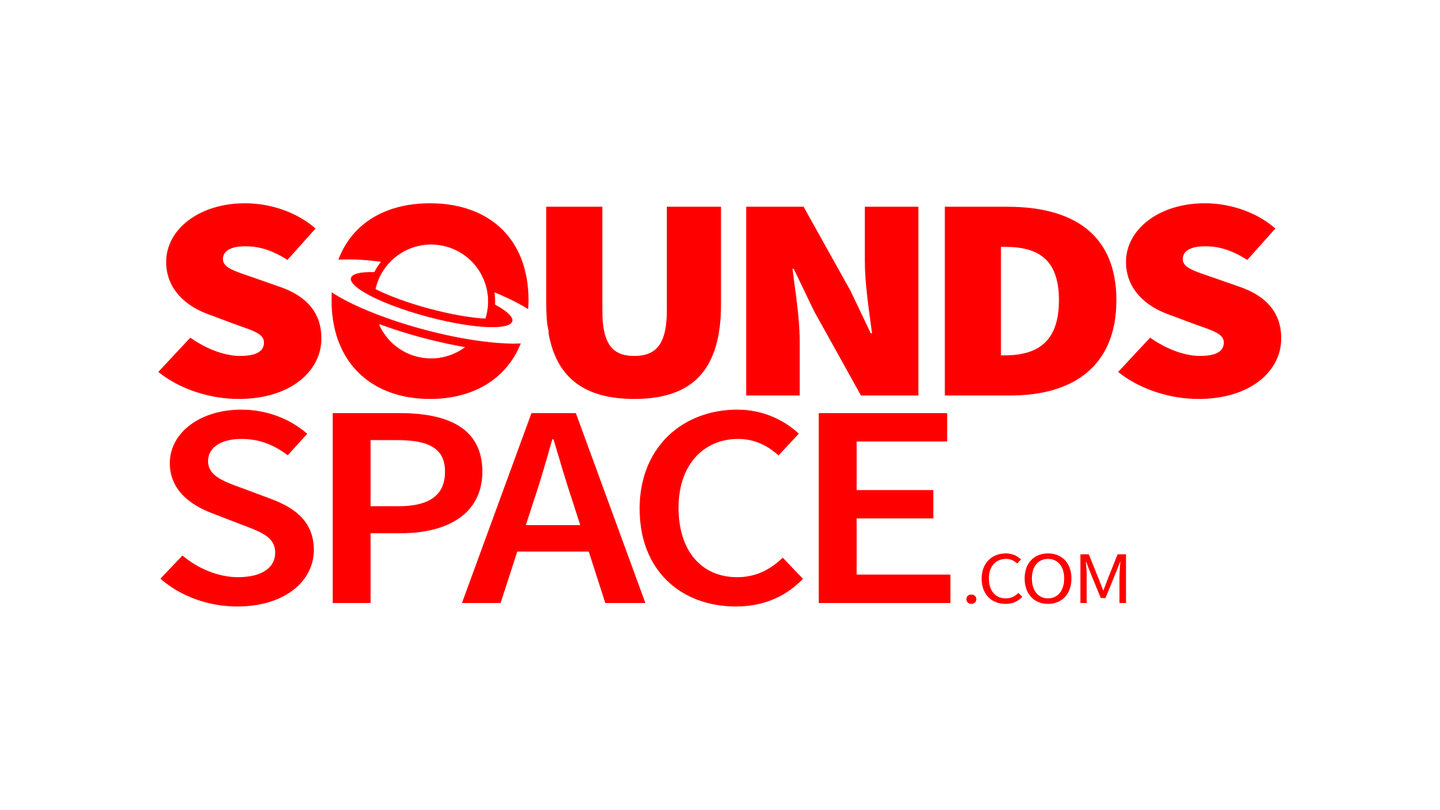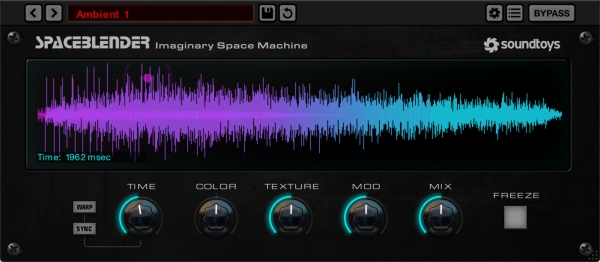Soundtoys SpaceBlender: Reimagining Reverb and Spatial FX for the Modern Producer
In the ever-evolving world of audio production, few companies have left as significant a mark as Soundtoys. Known for creating some of the most sonically rich and creatively inspiring plugins, Soundtoys has continuously pushed boundaries. With the release of SpaceBlender, the company cements its legacy in the world of spatial audio, offering a unique and highly innovative tool that merges reverb, modulation, and delay into a multidimensional sound-sculpting powerhouse.
If you’re a producer, sound designer, mixing engineer—or even an adventurous musician—SpaceBlender isn’t just another reverb plugin. It’s a sound-morphing environment designed to enhance depth, width, and movement in your tracks like never before.
What is SpaceBlender?
SpaceBlender is more than just a reverb unit. It’s a hybrid effects plugin that blends reverb, delay, pitch shifting, filtering, and modulation into one streamlined interface. Think of it as a spatial laboratory where you can create immersive soundscapes, evolving ambiences, and twisted echoes that breathe life into even the most static sound sources.
SpaceBlender is built on a dual-engine system where two independent reverb paths—each with their own parameters—can be blended together. These engines can also interact with pitch shifters, modulators, filters, and delays, giving you the kind of freedom usually reserved for modular environments.
Key Features
1. Dual Reverb Engines
At the heart of SpaceBlender lies two separate reverb engines, each offering distinct textures and tunings. You can route a signal through either engine individually or blend both simultaneously. Each engine features:
-
Multiple reverb types: plate, hall, room, ambient, and experimental textures
-
Pre-delay, decay, damping, diffusion, and size controls
-
Modulation for movement and shimmer
-
Filter options (high-pass/low-pass)
This dual engine system allows you to blend realistic space emulations with surreal, otherworldly ambiences.
2. Spatial Morphing via Blender Control
The star of the plugin, and what gives SpaceBlender its name, is the "Blender" control—a macro that smoothly morphs between the two reverb engines. You can automate this knob for dynamic space shifting, letting you create motion that follows your song's emotional arc.
3. Integrated Modulation and Pitch Shifting
Both engines feature built-in modulation and pitch effects. You can add slow, chorus-like motion or intense, vibrato-style warbles to your tails. Pitch shifting opens up possibilities for shimmer reverbs, alien-like decays, and spectral echoes.
4. Delay and Feedback Paths
SpaceBlender includes feedback delay lines, allowing you to treat reverb as a time-based instrument. Feedback can be fed through filters and modulations, meaning you can create infinite ambience loops, dub-style tails, or reverse reverb effects with incredible character.
5. Creative Filters and EQ
Each signal path is equipped with creative EQ and filtering tools, so you can sculpt the reverbs and delays to fit perfectly in your mix. From warm analog rolls to surgical dips, SpaceBlender’s filters help you avoid the muddy pitfalls of layered reverbs.
6. Preset Browser and Soundtoys Signature Interface
SpaceBlender ships with a robust preset browser filled with signature patches from pro sound designers. You’ll find categories for:
-
Vocals
-
Synths
-
Guitars
-
Cinematic FX
-
Experimental/Glitch
The interface retains the signature retro-modern aesthetic of Soundtoys, making it both intuitive and inspiring to use.
Use Cases: How to Get the Most Out of SpaceBlender
1. Vocals with a Cinematic Lift
One of the most powerful applications of SpaceBlender is creating emotional space for vocals. By blending a tight plate on one engine with a shimmering ambient hall on the other, and subtly automating the Blender control, you can elevate a dry vocal to cinematic heights without cluttering the mix.
Use pitch-shifting to add angelic shimmer, or dial in feedback for lush trails that follow longer phrases. For indie, pop, or cinematic genres, this effect is unmatched.
2. Synth Atmospheres and Pads
SpaceBlender truly shines with ambient synths and pads. Start with two contrasting reverbs (e.g., dark room + modulated hall), add modulation and pitch shift, and blend dynamically to achieve organic, living textures.
The delay feedback allows you to build evolving drones that change over time—perfect for ambient producers, soundtrack composers, and experimental artists.
3. Guitar and Instrument Spatialization
Guitarists will love SpaceBlender for its ability to add both depth and movement. Whether you're after lush shoegaze tones, clean slapback with shimmer, or psychedelic filter-swept reverbs, this plugin makes it easy.
Use a stereo delay path with a low-decay hall and modulate the Blender slowly for moving stereo reverbs that fill up the mix beautifully.
4. Drums and Percussion Magic
Yes, SpaceBlender can even transform your drum and percussion tracks. By setting up a short, filtered room verb on Engine A and a distorted, pitch-shifted hall on Engine B, you can morph between tight spatial impact and lo-fi abstract trails. Perfect for glitch, breakbeat, IDM, or even trap/hip-hop producers.
Tip: Automate the Blender on your snare or clap bus for shifting spatial energy in the chorus or drop.
SpaceBlender vs Other Reverb Plugins
Let’s compare how SpaceBlender stacks up against other popular plugins in the same category.
| Plugin | Strengths | Limitations |
|---|---|---|
| SpaceBlender | Dual engines, mod/pitch, delay, blender macro | CPU intensive at high settings |
| Valhalla VintageVerb | Lush traditional spaces, low CPU | No modulation or pitch shift, static spaces |
| FabFilter Pro-R | Clean mix reverbs, EQ flexibility | Less creative/experimental |
| Eventide Blackhole | Otherworldly large spaces | Limited delay/feedback manipulation |
| Output Portal (granular FX) | Creative modulation and movement | Not a dedicated reverb engine |
SpaceBlender is unique in that it combines multiple effects types into one plugin, offering near-modular flexibility while maintaining an intuitive interface. While plugins like Valhalla and Blackhole excel at their specific niche, SpaceBlender is for the producer who wants to shape and animate space dynamically.
Performance and System Requirements
Soundtoys plugins are known for their robust engine and analog-style warmth. However, with great power comes some computational load.
System Requirements (as of 2025):
-
macOS 10.14 or later / Windows 10 or later
-
AU, VST2, VST3, AAX Native
-
Minimum 8GB RAM (16GB recommended for large projects)
-
Authorization via iLok (account only, dongle optional)
While SpaceBlender can use more CPU than simpler plugins, its sound quality more than justifies the resources. For those with modern systems, it runs efficiently and stably across DAWs.
Final Thoughts: A Spatial Masterpiece
Soundtoys SpaceBlender is not just a plugin—it’s a creative instrument. It rewards experimentation and invites producers to push the boundaries of spatial sound design. From subtle room enhancement to vast ambient dreamscapes, SpaceBlender gives you the tools to shape depth, emotion, and movement with finesse.
Its ability to blend between two engines and morph the sonic space in real-time makes it a must-have for anyone working in modern genres like electronic, ambient, cinematic, indie, and even pop or hip-hop.
Whether you’re mixing vocals, crafting unique reverbs, or designing entirely new atmospheres, SpaceBlender gives you the freedom to explore. It’s the perfect combination of classic reverb philosophy and future-facing sound design tools.
If you're looking to upgrade your spatial FX arsenal or need that one plugin that inspires new ideas every time you open it—SpaceBlender is it.
Have You Tried SpaceBlender?
What’s your favorite Soundtoys plugin? Have you used SpaceBlender in your projects yet? Share your experience or questions in the comments—let’s start a conversation about how spatial audio is evolving in 2025.
DOWNLOAD IT HERE


